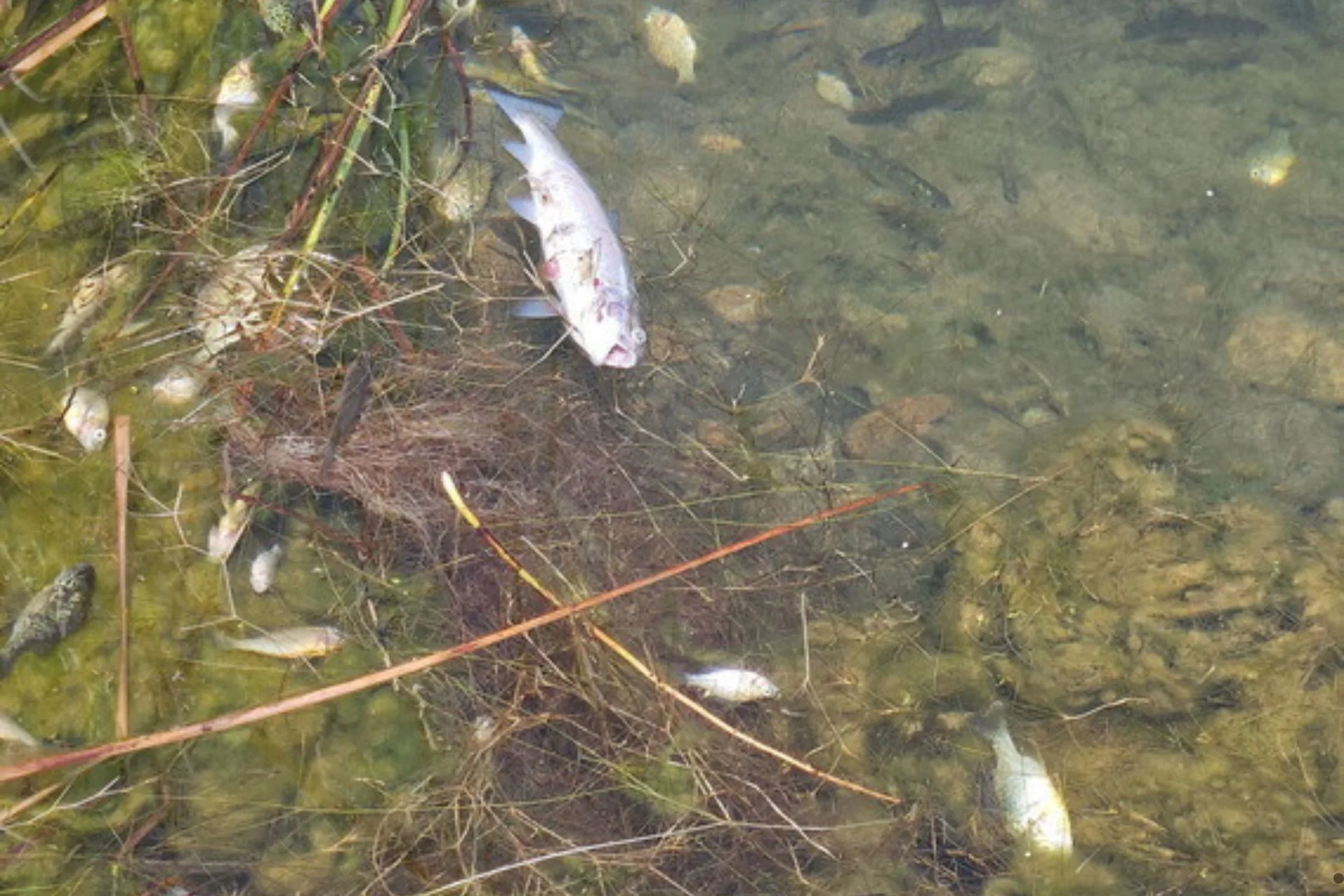BILLINGS – Montana Fish, Wildlife & Parks recently received several reports of dead fish at the Laurel Pond in Yellowstone County. FWP officials have investigated the situation and confirmed the fish kill is a natural event caused by low dissolved oxygen levels in the pond. There is no current concern for human or pet health and safety and fish may still be harvested from the pond, following regulations.
Fish, like humans, need oxygen to survive. Most summer fish kills are natural events that occur when dissolved oxygen in a waterbody becomes depleted, often due to changes in temperature, weather or aquatic vegetation processes. Declining oxygen levels can lead to fish stress and, ultimately, fish mortality. The Laurel Pond has experienced similar fish kills in previous years due to low oxygen levels.
Laurel and the surrounding area recently experienced hot, sunny weather followed by cooler, rainy and cloudy days. This shift in weather and sunlight changed the function of the abundant aquatic plants in the Laurel Pond, leading to changes in the pond’s oxygen levels and causing some fish to die. During the hot, sunny days, aquatic plants were photosynthesizing in the pond and producing dissolved oxygen. At night and on the cloudy days, when sunlight was not available for photosynthesis, the aquatic plants were respiring, a process that consumes oxygen. Oxygen is also consumed as aquatic plants die and decay.
Shallow, warm and productive waterbodies, such as the Laurel Pond with a maximum depth of just 12 feet and abundant vegetation, are at higher risk of fish die-offs. Warm water holds less dissolved oxygen than cold water. Most of the time, these oxygen declines do not occur in the whole waterbody and do not harm entire fish populations. FWP staff observed abundant live fish of various sizes in the Laurel Pond following the die-off.
Species affected in the Laurel Pond fish kill include mostly small sunfish and some largemouth bass and rainbow trout. FWP does not plan to remove the fish carcasses at the pond, as they are safe for scavengers to consume.
What can anglers do?
Anglers who see dead or dying fish can report them via FWP’s online portal:sickfish.mt.gov. These reports are helpful for biologists to understand what anglers are seeing on the water and to be able to respond if necessary. Anglers can also contact a local FWP office with specific information including location, date, number and species of fish, and if possible, photos and any other relevant information. This information will help biologists determine if the event was natural or the result of accidental or unauthorized human actions.
Fish kills can occur year-round due to a variety of factors, including dissolved oxygen depletion, extreme water temperatures, fish diseases or the introduction of pollutants.
-fwp-



